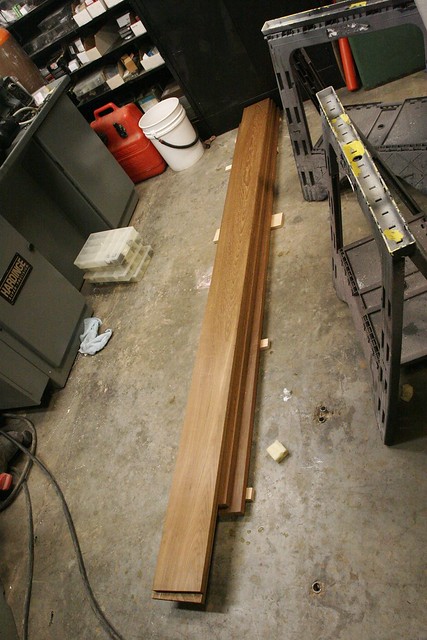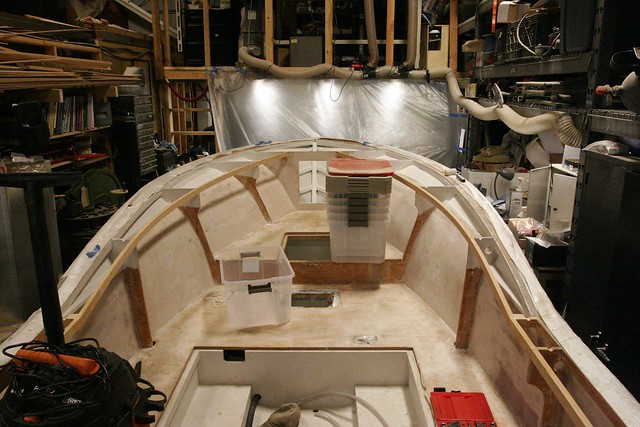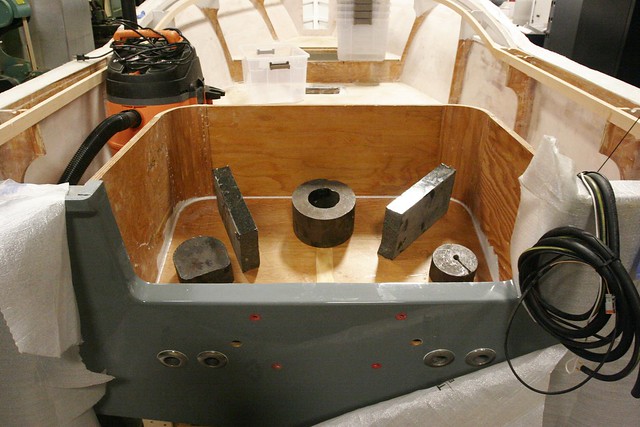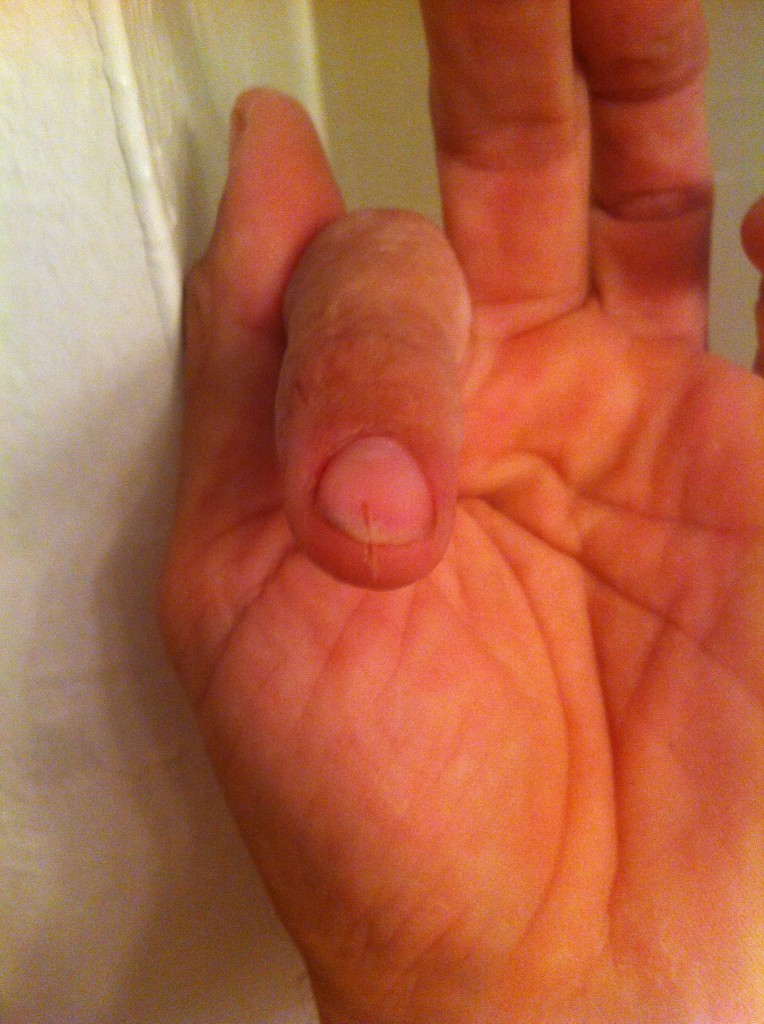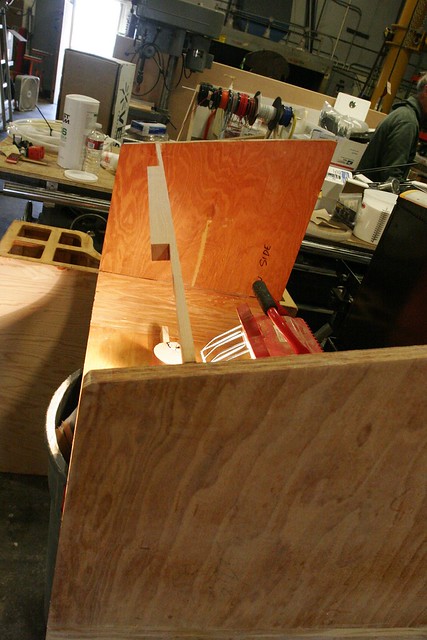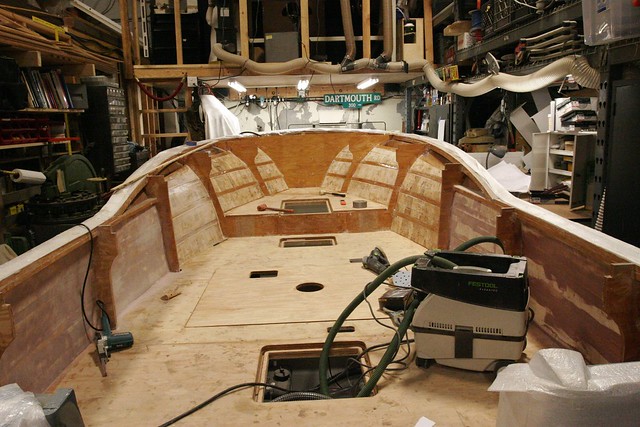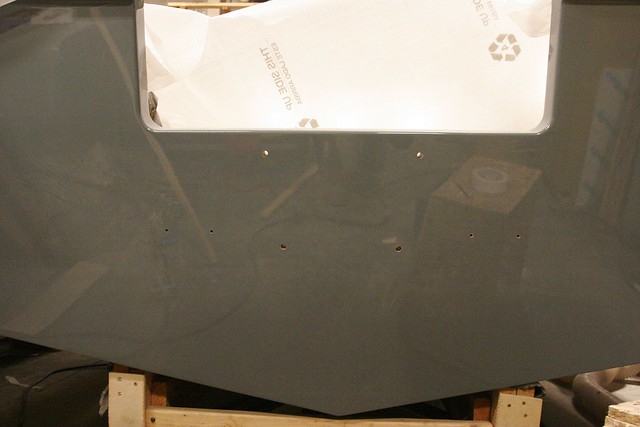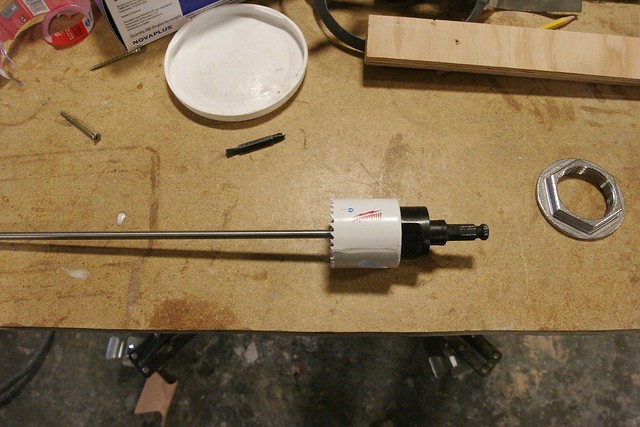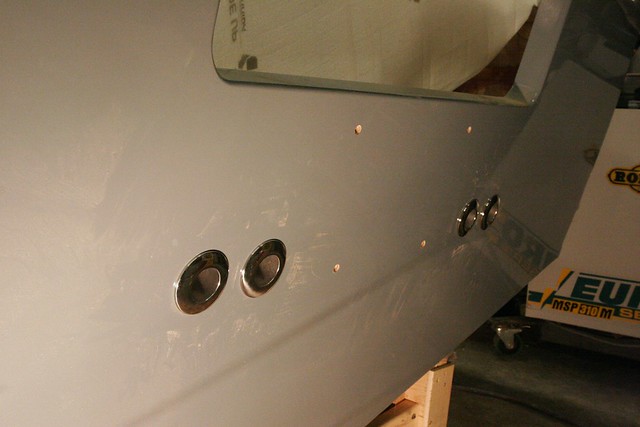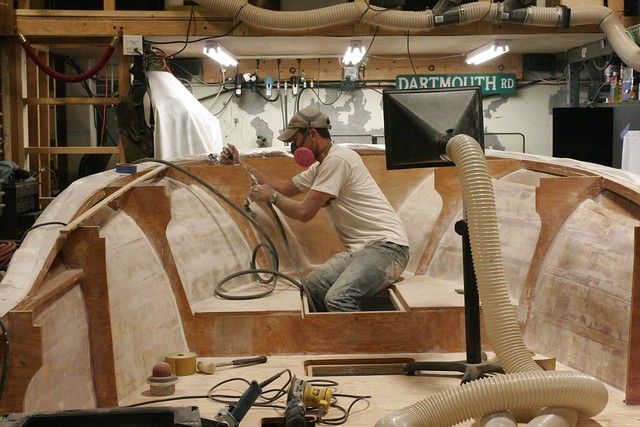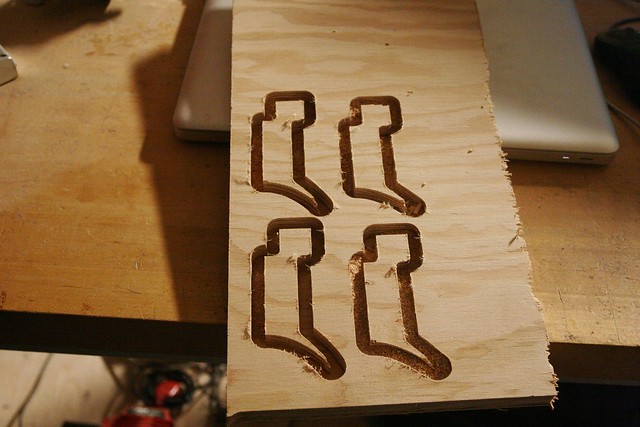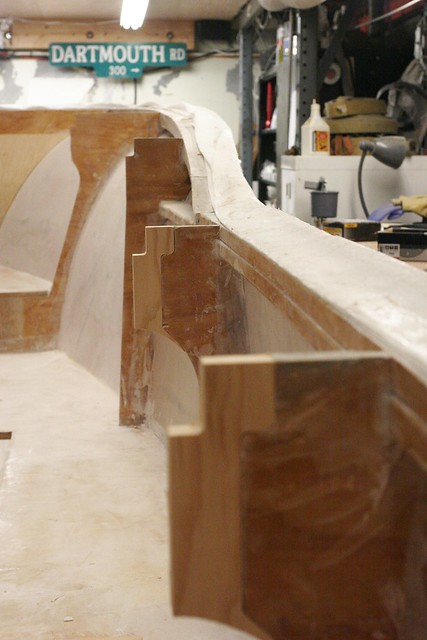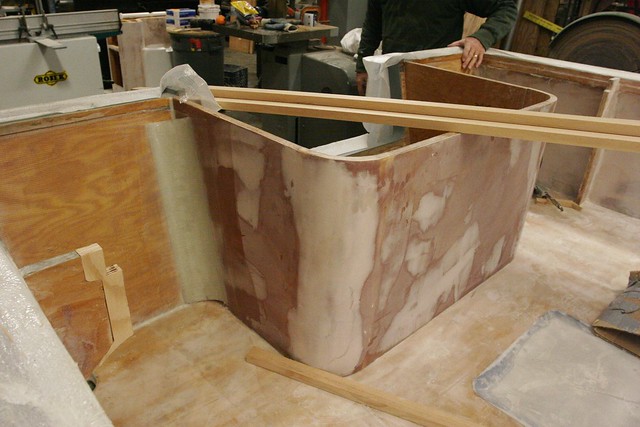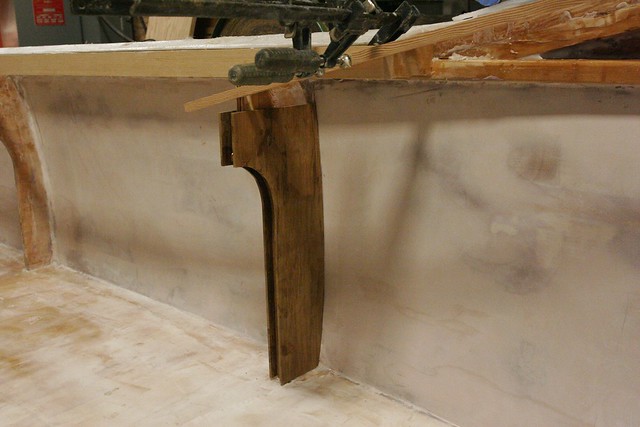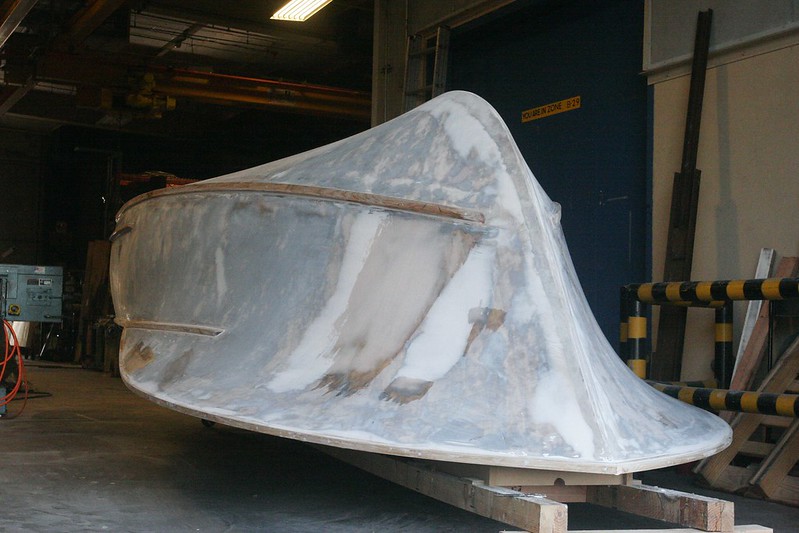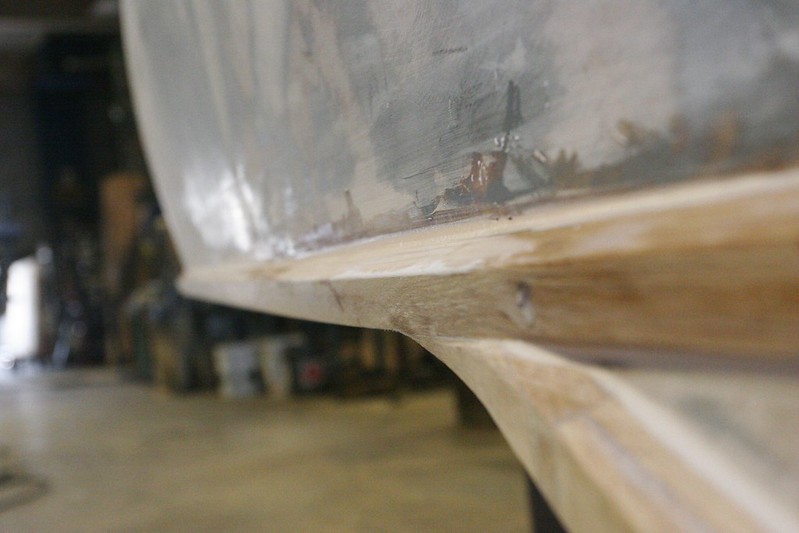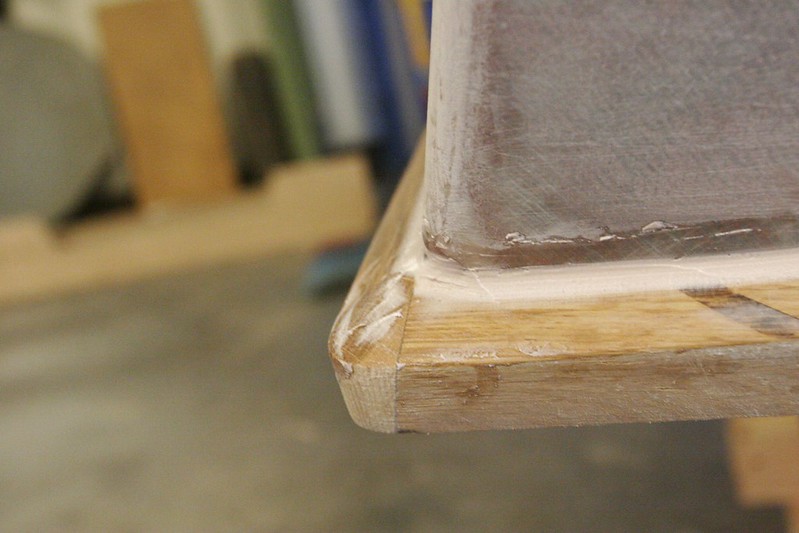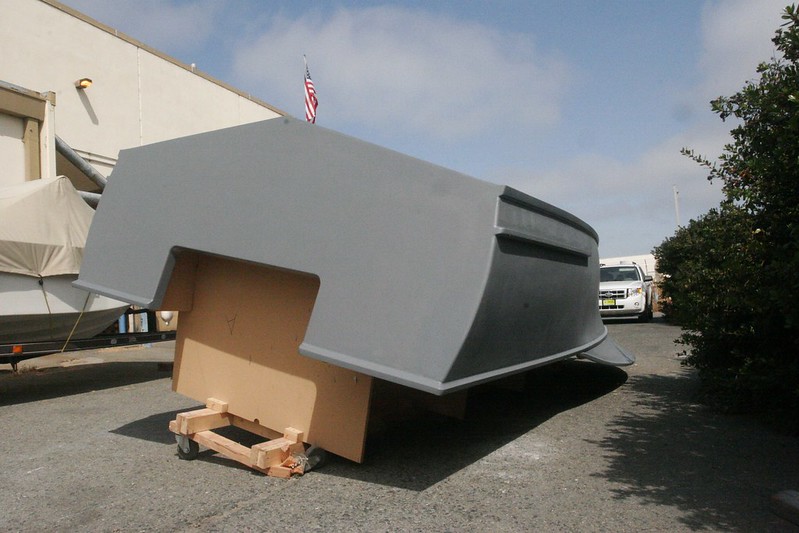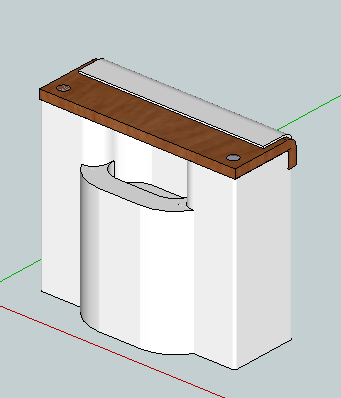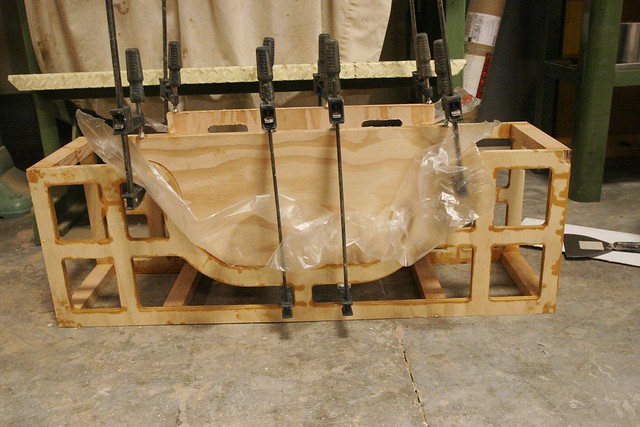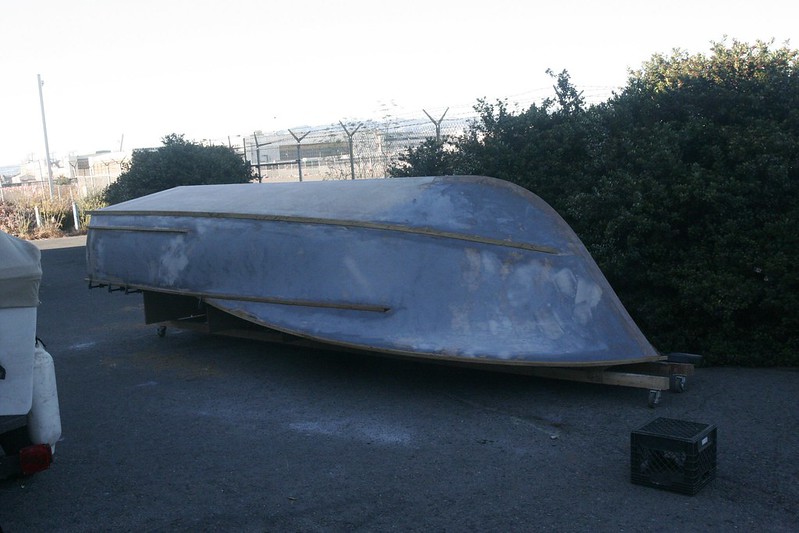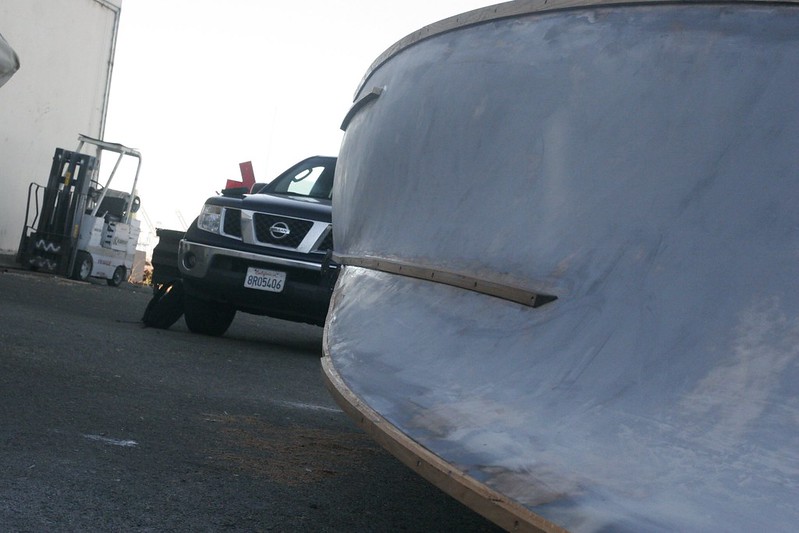Since last we touched base there has been more odd job activity, as well as some big steps.
There’s been some ongoing varnishing, though at this point I’m basically waiting for the AwlSpar coats to dry enough that they can be overcoated with the AwlBrite. AwlSpar I was willing to do in my apartment. AwlBrite, notsomuch. About half the contents of AwlBrite start with “hexa.” For whatever reason (someone please explain to me if you know!) it seems like chemicals that start with hexa are really frigging bad for you. Hexavalent Chromium? Yeah, I saw Erin Brockovich. The list goes on, but I won’t bore you. Anyway, even though I’ve got things all masked off so that basically I don’t smell anything outside my kitchen – where I make food – I’m not going to bring that crap into my house. This is a problem in that it needs to cure in temperatures well above what our current SF winter is providing, but I’ll figure something out.
One thing that you, dear reader, have not yet seen is the veneer I built for the face of the step up to the forward casting platform area. I decided to add a bit of flare here and represent the day shape for a boat engaged in fishing in teak inlay in the middle of the step. For those who haven’t sat through a USCG certified captain’s license exam, day shapes are visual signals hung on boats during the day to signify certain things. At night you use lights. Here’s the day shape for a vessel engaged in fishing:
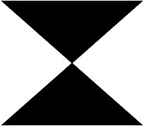
Here’s the fascia for the step. See it hiding in there?:

Okay, actually, nearly everything I just said is a flat out lie. That is, in fact, the day shape for a commercial fishing vessel engaged in fishing, but the truth is that the two remaining pieces of veneer I had weren’t wide enough to cover the step with the seam dead center, so I pieced some scraps together to make that inlay and make the whole thing a few inches wider. It only occurred to me later that it kinda looked like the day shape. But I like the other explanation better.
When not at home huffing varnish, I’ve gotten some big stuff done. On Tuesday I bagged the balsa to the inside of the motorwell to thicken the walls.
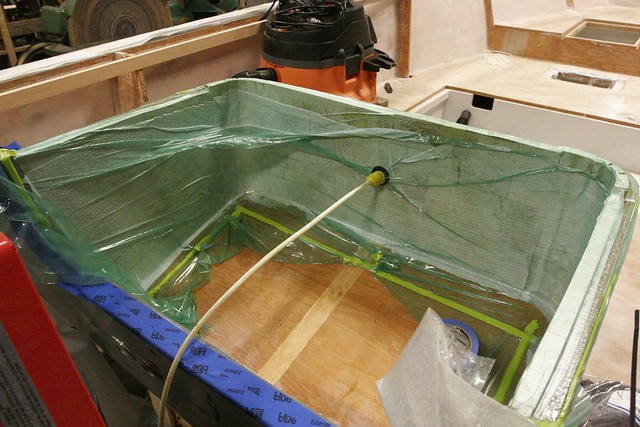
This was a rather time consuming process, principally because I decided to use up the scraps of balsa I had left over from doing the hullsides and this quickly turned into a game of balsa-tetris trying to get the entire surface covered. I make a point of trying to be efficient in my use of material. I might have gone too far this time, but it worked in the end.
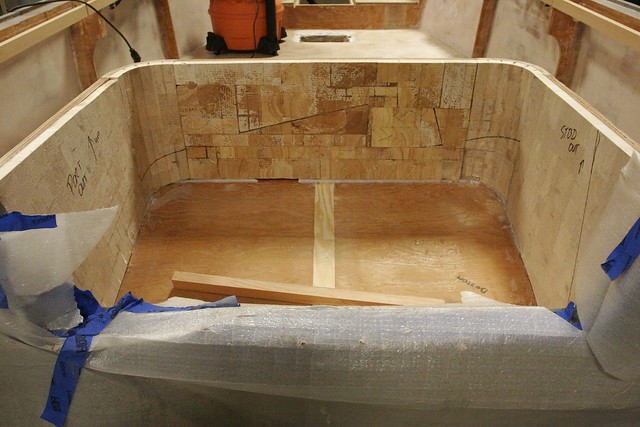
Today, I had my dad back on the job so we did what was definitely a 2-person job: shaping and bonding the forward decks. Here they are, all “clamped” in place. I was out of bronze and stainless screws and didn’t want to go to the store, so we scrounged around the shop and found everything we could that was heavy to compress the decks into the epoxy. The casters of the dolly she’s sitting on were less than thrilled, but they’re holding in there.

I also spent some time trying to shape the drain openings to the motorwell. I’m close, but there’s still some fine tuning to do.
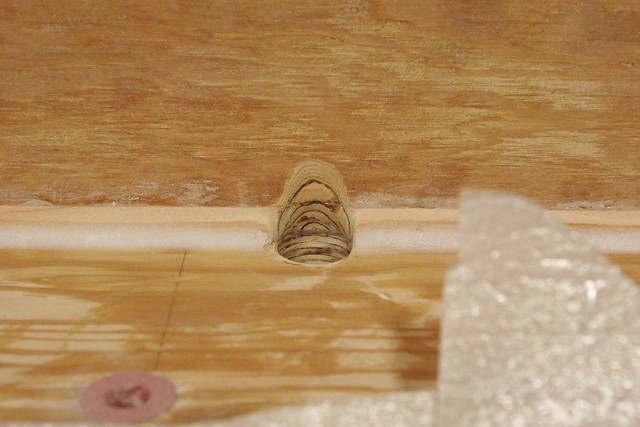
And in a similar vein, I got out the holesaw and drilled the routing holes in the aft starboard frames so I can get the steering and electrical lines to the motor. While I was at it I drilled smaller holes in every frame for whatever random routing ultimately needs to happen down the road, and then had a bit of a brainstorm about under-gunnel courtesy lights and realized that if I notched the tops of the frames, rather than just drilling holes, I could run an uninterrupted length of LED ribbon down each side. This would be much faster to do, and would have fewer connections that could go bad. Here’s what those look like:
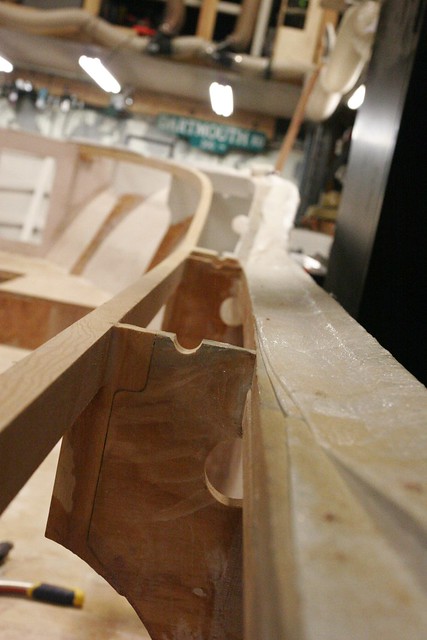
It’s been an expensive few days. I ordered a bunch of parts for the fuel system, all the steering components, and bought teak for the cockpit gunnels and inwales. Wanna see how much teak you get for $1000? This stuff is $35/BF. Crazy. But there really isn’t anything else that comes close.
